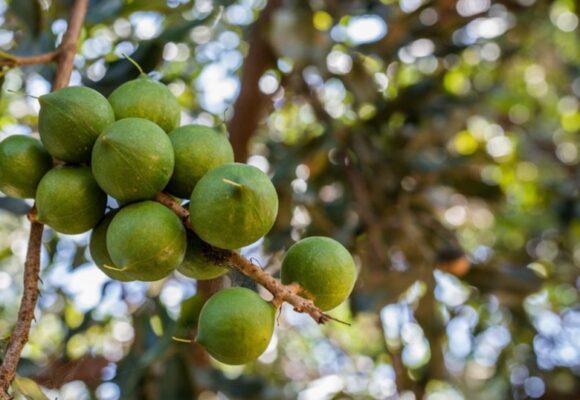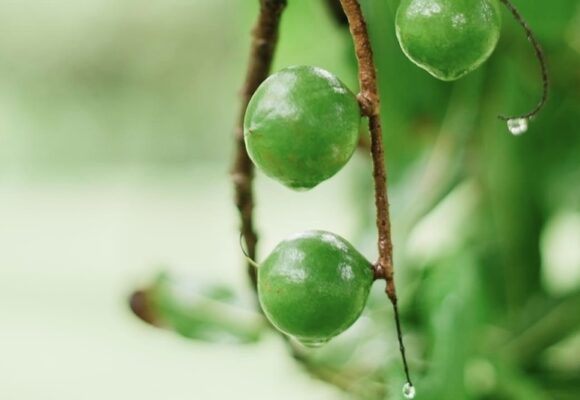Supply holds steady as Asia leads strong demand
Supply
The crop situation remains unchanged since August, with total supply from the 2017 crop expected to be no greater than the prior year, at around 185,000 t in-shell. Prospects for 2018 are looking good so far with both Australia and South Africa receiving good rainfalls during October.
Australian sales
Sales of Australian macadamia kernel were steady in the 12 months to September 2017 with continued strong demand, especially from Asian markets. On a year to date basis, sales of macadamia kernel for the current crop are positioned slightly below the five-year average.
Sales of Australian in shell rose strongly in the 12 months to September and on a year to date basis sales are tracking 24% higher than the same time last year.



Demand
Japan
Total macadamia kernel imports from all origins rose 2% in the 12 months to September 2017, with Australian kernel sales up 8% over the same period. Australia remains the preferred supplier on a quality basis, but this increase also reflects the limited supply available at the moment. The traditional confectionery category is stable, with most new product development occurring in the bakery sector (cookies mostly). Some snack products containing macadamias have been reworked, with a lower percentage of macadamias noted in some mixed nut products, and a number of pack size reductions.
South Korea
Total macadamia kernel imports from all origins were up 16% in the 12 months to September 2017. Australia represented the lion’s share at more than 95%, and Australian kernel sales rose 65% over the same period. Interest in macadamias is high and there are significant growth opportunities. Most products available or in development are snacking products, including straight lines, trail mixes and flavoured products. There is some exporting of value added products to China via e-commerce retailers.
Taiwan
Total macadamia kernel imports from all origins were down 25% in the 12 months to September 2017. Australian kernel sales fell 15% over the same period. Interest is strong, however the market has found it difficult to secure supply.
China
Total macadamia kernel imports from all origins were up around 10% in the 12 months to September 2017, and in shell imports were up by approximately 7%. Australian kernel sales more than doubled and in shell sales rose 36%, reflecting strong demand for macadamias, and restricted supply from South Africa. China’s strong interest in macadamias is continuing, with e-commerce playing a significant role as nut brands promote macadamias as a hero product online. The kernel market is developing but it is still early days and it’s expected to take some time for kernel distribution to become more widespread.
Europe
Total macadamia kernel imports from all origins were down 6% in the 12 months to June 2017. Australian kernel sales were down 10% in the 12 months to September 2017. This market has performed remarkably well given there have been retail price increases, yet the impact on volume has been minimal. There is significant opportunity in the European manufacturing sector, with the majority of product (estimated at more than 80%) used in snacking.
United States
Total macadamia kernel imports from all origins fell by 15% in the 12 months to August 2017. Australian kernel sales were down 16% in the 12 months to September. Although the US is the largest market for macadamia kernel overall, macadamia use has been narrow on the mainland, and noted primarily in snacks and cookies. The price gap between macadamias and other nuts has widened in the last 12-18 months, and this has had some impact. There is considerable opportunity for product development in this market with the upside that there is significant potential for large volume use.
Australia
Imports of macadamia kernel represented less than 3% of total consumption in Australia in the 12 months to September 2017. Most product is sold in a snacking format through the fresh produce category or in the cooking aisle, while 25% of Australian kernel is used in manufactured food products. The last 12 months has seen limited big brand innovation, but plenty of niche product development outside of the major supermarkets, with some of this driven by macadamia industry participants, including growers.
Statistics quoted in this report are sourced from The Australian Macadamia Handlers Association, China Customs, Hong Kong Census & Statistics Department, Korea Customs and Trade Development Institution, Taiwan Directorate General of Customs, Japan Ministry of Finance, Eurostat, USDA, ABARES


